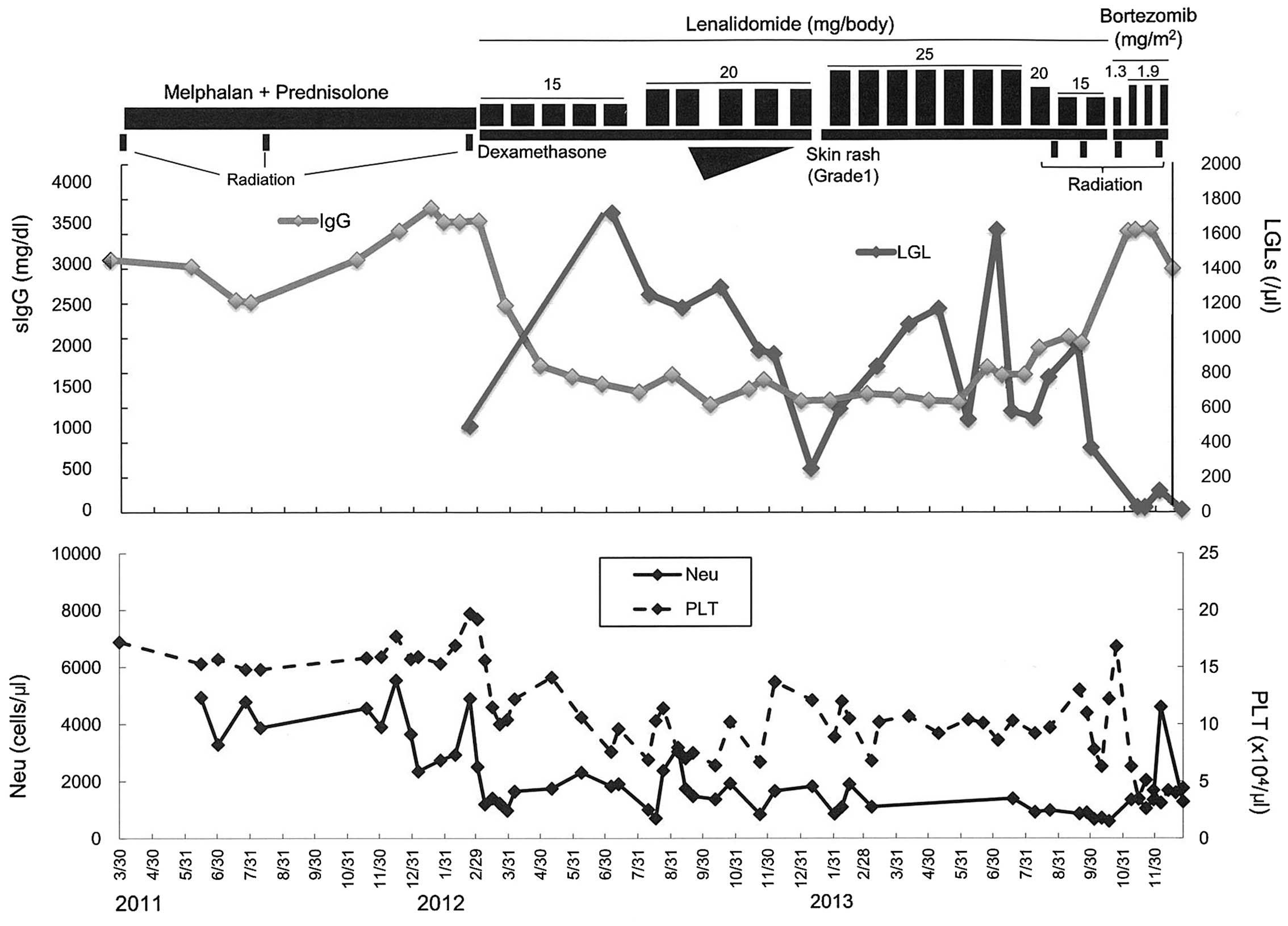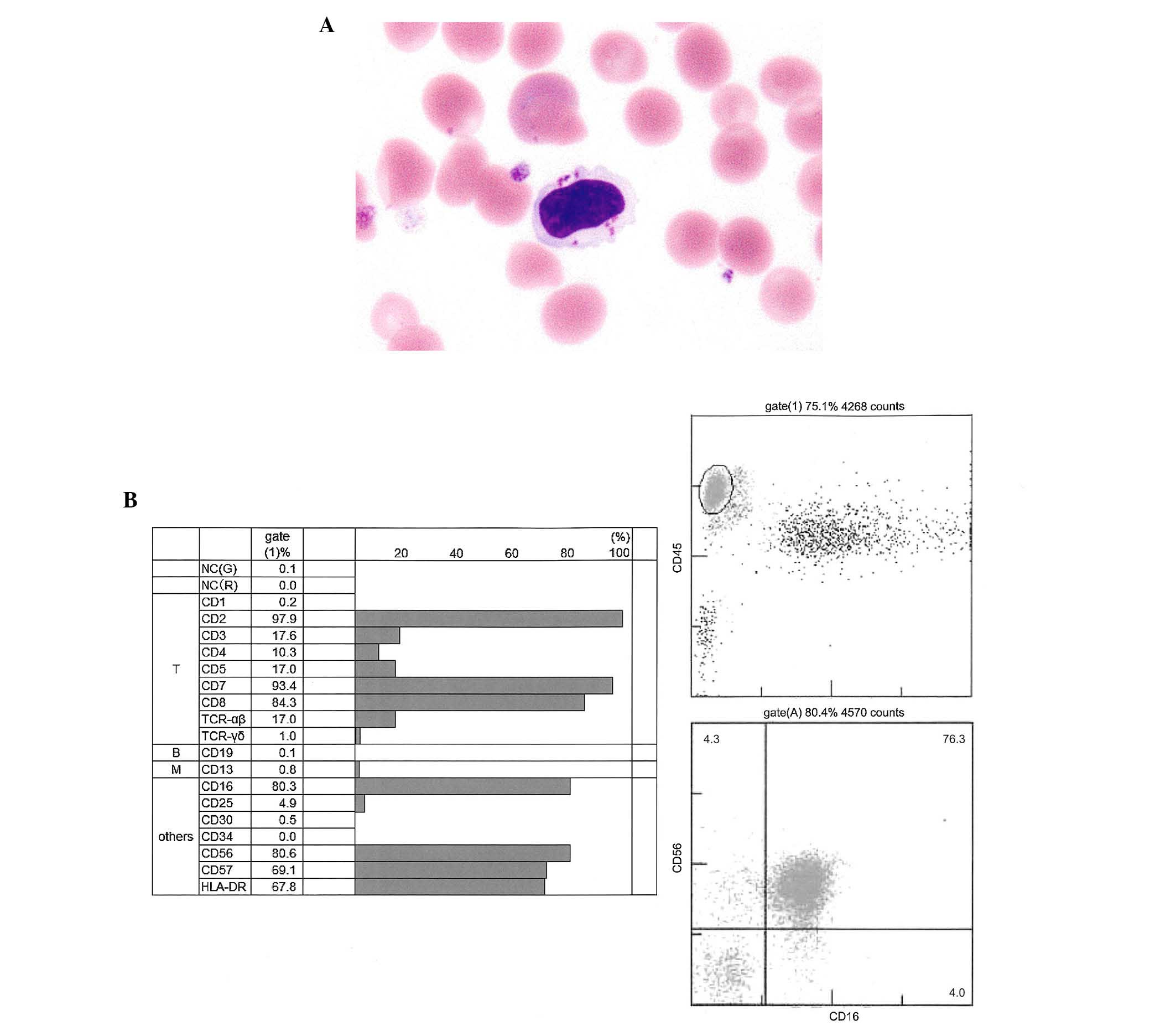|
1
|
Quach H, Ritchie D, Stewart AK, Neeson P,
Harrison S, Smyth MJ and Prince HM: Mechanism of action of
immunomodulatory drugs (IMiDS) in multiple myeloma. Leukemia.
24:22–32. 2010. View Article : Google Scholar : PubMed/NCBI
|
|
2
|
Chan AC, Neeson P, Leeansyah E, Tainton K,
Quach H, Prince HM, Harrison SJ, Godfrey DI, Ritchie D and Berzins
SP: Natural killer T cell defects in multiple myeloma and the
impact of lenalidomide therapy. Clin Exp Immunol. 175:49–58. 2014.
View Article : Google Scholar : PubMed/NCBI
|
|
3
|
Dimopoulos MA, Chen C, Spencer A,
Niesvizky R, Attal M, Stadtmauer EA, Petrucci MT, Yu Z, Olesnyckyj
M, Zeldis JB, et al: Long-term follow-up on overall survival from
the MM-009 and MM-010 phase III trials of lenalidomide plus
dexamethasone in patients with relapsed or refractory multiple
myeloma. Leukemia. 23:2147–2152. 2009. View Article : Google Scholar : PubMed/NCBI
|
|
4
|
Palumbo A, Hajek R, Delforge M, Kropff M,
Petrucci MT, Catalano J, Gisslinger H, Wiktor-Jędrzejczak W,
Zodelava M, Weisel K, et al: Continuous lenalidomide treatment for
newly diagnosed multiple myeloma. N Engl J Med. 366:1759–1769.
2012. View Article : Google Scholar : PubMed/NCBI
|
|
5
|
Attal M, Lauwers-Cances V, Marit G,
Caillot D, Moreau P, Facon T, Stoppa AM, Hulin C, Benboubker L,
Garderet L, et al: Lenalidomide maintenance after stem-cell
transplantation for multiple myeloma. N Engl J Med. 366:1782–1791.
2012. View Article : Google Scholar : PubMed/NCBI
|
|
6
|
McCarthy PL, Owzar K, Hofmeister CC, Hurd
DD, Hassoun H, Richardson PG, Giralt S, Stadtmauer EA, Weisdorf DJ,
Vij R, et al: Lenalidomide after stem-cell transplantation for
multiple myeloma. N Engl J Med. 366:1770–1781. 2012. View Article : Google Scholar : PubMed/NCBI
|
|
7
|
Neuber B, Herth I, Tolliver C, Schoenland
S, Hegenbart U, Hose D, Witzens-Harig M, Ho AD, Goldschmidt H,
Klein B and Hundemer M: Lenalidomide enhances antigen-specific
activity and decreases CD45RA expression of T cells from patients
with multiple myeloma. J Immunol. 187:1047–1056. 2011. View Article : Google Scholar : PubMed/NCBI
|
|
8
|
Mustjoki S, Ekblom M, Arstila TP, Dybedal
I, Epling-Burnette PK, Guilhot F, Hjorth-Hansen H, Höglund M,
Kovanen P, Laurinolli T, et al: Clonal expansion of T/NK-cells
during tyrosine kinase inhibitor dasatinib therapy. Leukemia.
23:1398–1405. 2009. View Article : Google Scholar : PubMed/NCBI
|
|
9
|
Gandhi AK, Kang J, Capone L, Parton A, Wu
L, Zhang LH, Mendy D, Lopez-Girona A, Tran T, Sapinoso L, et al:
Dexamethasone synergizes with lenalidomide to inhibit multiple
myeloma tumor growth, but reduces lenalidomide-induced
immunomodulation of T and NK cell function. Curr Cancer Drug
Targets. 10:155–167. 2010. View Article : Google Scholar : PubMed/NCBI
|
|
10
|
Lopez-Vergès S, Milush JM, Schwartz BS,
Pando MJ, Jarjoura J, York VA, Houchins JP, Miller S, Kang SM,
Norris PJ, et al: Expansion of a unique CD57+ NKG2Chi
natural killer cell subset during acute human cytomegalovirus
infection. Proc Natl Acad Sci USA. 108:14725–14732. 2011.
View Article : Google Scholar : PubMed/NCBI
|
|
11
|
Zhang L, Qian Z, Cai Z, Sun L, Wang H,
Bartlett JB, Yi Q and Wang M: Synergistic antitumor effects of
lenalidomide and rituximab on mantle cell lymphoma in vitro and in
vivo. Am J Hematol. 84:553–559. 2009. View Article : Google Scholar : PubMed/NCBI
|
|
12
|
Hsu AK, Gherardin N, Quach H, Harrison SJ,
Prince HM, Ritchie D and Neeson P: CD57+ NK cells are increased in
patients with multiple myeloma and are primed effectors for ADCC,
but not natural cytotoxicity. Blood. 122:19042013.
|
|
13
|
Katira P, Bonnecaze RT and Zaman MH:
Modeling the mechanics of cancer: Effect of changes in cellular and
extra-cellular mechanical properties. Front Oncol. 3:1452013.
View Article : Google Scholar : PubMed/NCBI
|
|
14
|
Magrangeas F, Avet-Loiseau H, Gouraud W,
Lodé L, Decaux O, Godmer P, Garderet L, Voillat L, Facon T, Stoppa
AM, et al: Minor clone provides a reservoir for relapse in multiple
myeloma. Leukemia. 27:473–481. 2013. View Article : Google Scholar : PubMed/NCBI
|
|
15
|
Keats JJ, Chesi M, Egan JB, Garbitt VM,
Palmer SE, Braggio E, Van Wier S, Blackburn PR, Baker AS,
Dispenzieri A, et al: Clonal competition with alternating dominance
in multiple myeloma. Blood. 120:1067–1076. 2012. View Article : Google Scholar : PubMed/NCBI
|
|
16
|
DuPage M, Mazumdar C, Schmidt LM, Cheung
AF and Jacks T: Expression of tumour-specific antigens underlies
cancer immunoediting. Nature. 482:405–409. 2012. View Article : Google Scholar : PubMed/NCBI
|

















